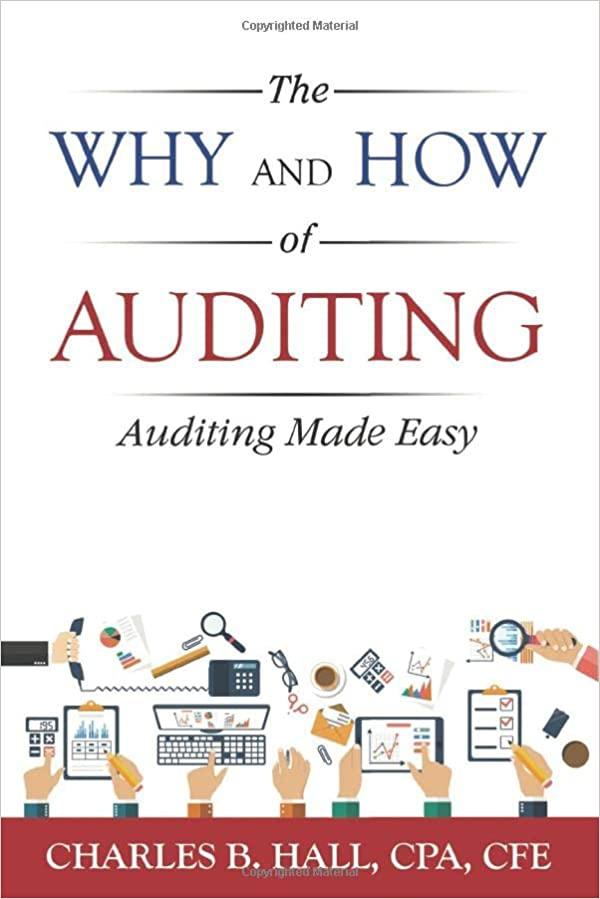Question
Charlie is an employee of Shiny Homes Pty Ltd (Shiny Homes). He is a real estate agent. Shiny Homes also operates a separate business on
Charlie is an employee of Shiny Homes Pty Ltd (Shiny Homes). He is a real estate agent. Shiny Homes also operates a separate business on landscaping to do up houses before they are put up for sale. From the period 1 July 2016 to 30 June 2017 the following events took place: In 1 September 2016, Shiny Homes provided Charlie with a 4 wheel drive sedan value at $70,000. From 1 September 2016 to 31 March 217 the car travelled 80,000 km. He parked his car in his garage in the evenings. Before he went away for his Christmas holidays, the car was sent to be serviced and he could not use his car for 2 days. He estimated that 70% of the time he used the car was for business purposes and the other 30% of the time for private use. Charlie also maintained a log book for 12 weeks and the following information was recorded: 50,000 km were work related Petrol and oil per month - $2,000 Repairs and maintenance per month - $3,500 Registration per annum - $240 Insurance per annum - $960 Note: these expenses were incurred by Shine Homes. In 1 February 2017, Charlie was involved in a minor car accident and he could not use the vehicle for 2 weeks (1st to 14th February 2017). This occurred a week before Charlies wedding and Shine Homes decided to hire a car for that period at a cost of $1,000 to allow Charlie and his wife Deborah to go for their honeymoon trip to the Gold Coast. Shine Homes paid for their honeymoon accommodation which was worth $3,000. During working hours Charlie parked his car at Secure Parking (an unrelated entity) and Shine Homes paid $200 per week.
Required:
1-Advise both Charlie and Shine Homes about the fringe benefit consequences of these events.
2-You are required to compute the taxable benefit where necessary. You must cite the relevant case law and legislation.
ILAC Form needed
Please comply with the following style guide: 1. Do not re-state the question.
2. Use in-text referencing. Do not use footnotes.
3. Names of statutes should be italicised, and followed by the jurisdiction not in italics, for example: Acts Interpretation Act 1901 (Cth). Note the abbreviation for Commonwealth is Cth not Cwlth.
4. The names of the parties must be italicised, but the citation must not, for example: Smith v Jones (1967) 345 CLR 34.
5. An in-text reference to a book should be structured as follows: (Latimer, 2010, p. 75). There is no need to put the authors initial. Note the positioning of brackets, stops and commas. You use pp. only if referring to more than one page. If you are referring to a book with more than one author, the in-text reference would be as follows: (Smith et al, 2002, p. 78).
6. An in-text reference to the subjects Modules should be structured in brackets as per the following example obviously you will alter the reference depending on the subject, year of study and Module number: (CSU LAW505 Modules, 2017, Topic 7).
7. Do not start a new line simply because you are starting a new sentence.
8. Be careful of apostrophes: directors = of a director, directors = of many directors, directors = many directors. Also particularly prevalent is confusion between its (it possessive) and its (contraction of -it is-).
9. The following words always start with a capital letter: Commonwealth, State, Act, Bill, Regulation, Constitution, Parliament. Do not unnecessarily capitalise other words.10. Do not use terms such as cant, wont, dont and shouldnt, neither should one use -i.e.- and -e.g.- in formal writing.
11. A sentence must always begin with a full word and a capital letter so a sentence would start Section 55 says, not S 55 says or s 55 says
12. Start each paragraph on a new line, and leave a clear line gap after the preceding paragraph.
13. You must put page numbers on your assignment.
14. Quotations, and excerpts from legislation should be indented from the rest of the text in a separate paragraph. The text in quotations should not be in italics.
15. You must end your assignment with a bibliography that is divided into three separate parts, listing statutes, cases and books / articles / on-line Modules.
16. A listing of a book in a bibliography should appear in accordance with the following format: Barkoczy, S (2017). Foundation of Taxation Law 2017, (10th edition), Oxford University Press. If listing a book with multiple authors, do so as follows: Sadiq, K, Coleman, C, Hanegbi, R, Jogarajan, S, Krever, R, Obst, W, and Ting, A (2017), Principles of Taxation Law 2017, (10th edition), Pymont: Thomson Reuters
17. When listing statutes at the end of your assignment you should conform to the format: Income Tax Assessment Act 1997 (Cth). List the statute only once you do NOT list individual section numbers relied on. You should not list textbooks as the source of Acts the Act itself is its own source.
18. When listing cases conform to the format: Allied Mills Industries Pty Ltd v FC of T 89 ATC 4365.
19. When listing article conform to the format: Jones, J The new analysis of law (2010) 4 Journal of Recent Law 34.
20. Make sure that your sentences are grammatical it may be useful to read your assignment out loud if you have any doubts about this.
Step by Step Solution
There are 3 Steps involved in it
Step: 1

Get Instant Access to Expert-Tailored Solutions
See step-by-step solutions with expert insights and AI powered tools for academic success
Step: 2

Step: 3

Ace Your Homework with AI
Get the answers you need in no time with our AI-driven, step-by-step assistance
Get Started


